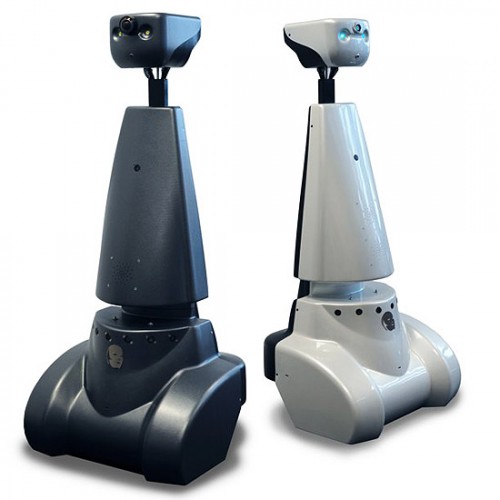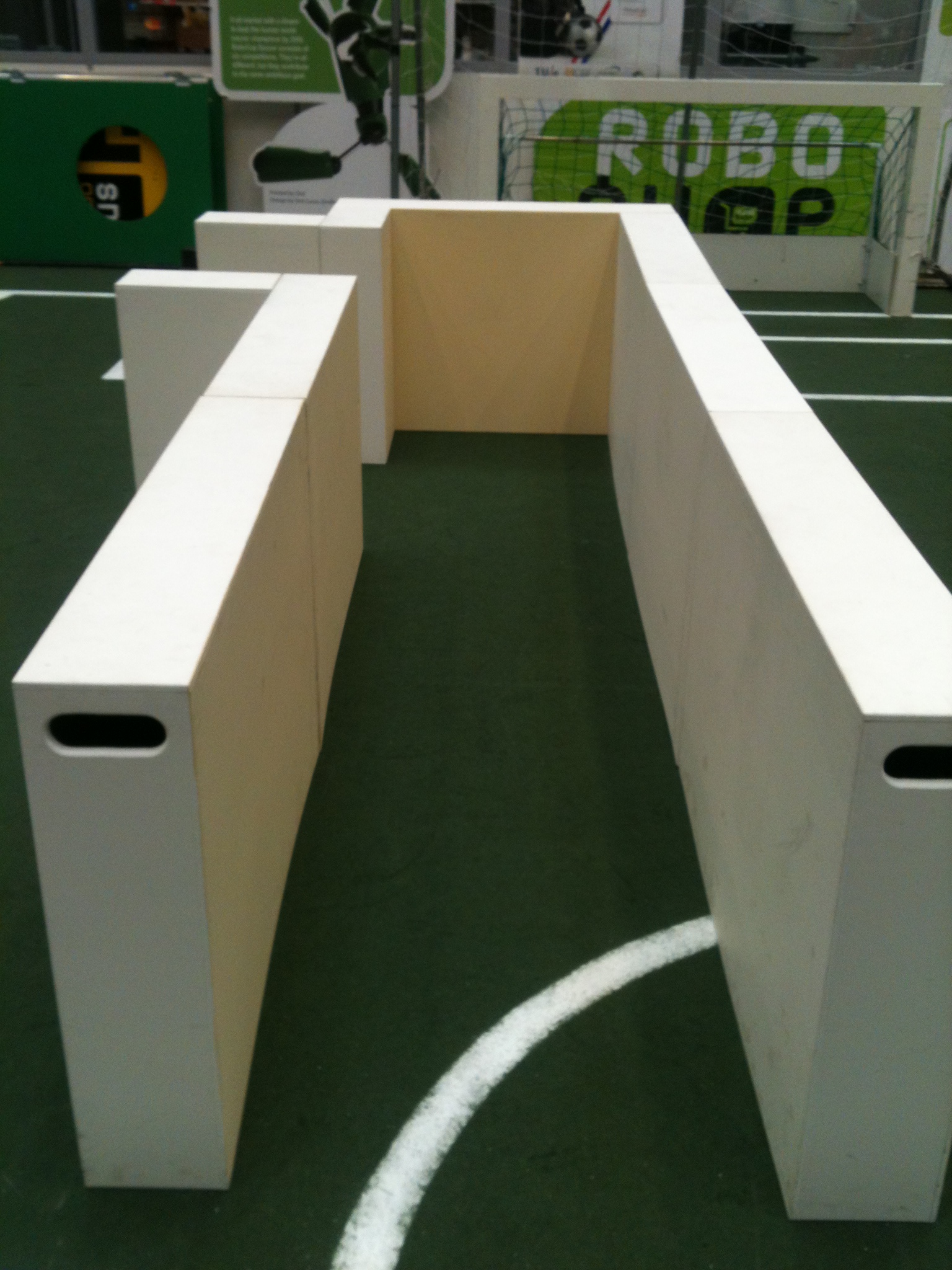Embedded Motion Control 2014: Difference between revisions
| Line 46: | Line 46: | ||
|} | |} | ||
<!-- | |||
== Pico test schedule == | == Pico test schedule == | ||
--> | |||
= Goal = | = Goal = | ||
Revision as of 12:04, 25 April 2014
Guide towards the assignment
'A-MAZE-ING PICO'
Introduction
This course is about software design and how to apply this in the context of autonomous robots. The accompanying assignment is about applying this knowledge to a real-life robotics task in which ROS will be the standard software framework.
Course Schedule and Lecture Slides
Lectures will be given on Fridays from 13.45 - 15.30 in Gemini-Zuid 3A10. The course schedule is as follows:
| April, 25th | Introduction | Assignment and basic computer setup |
| May, 2nd | C++ and ROS Concepts | Image processing using OpenCV |
| May, 9th | Navigation | Software design |
| May, 16th | Corridor competition | |
| May, 23th | ||
| June 6th | AMIGO's software architecture: performing a RoboCup Challenge | |
| June 13th | Student presentations | |
| June 20th | Final competition | |
Goal
The goal of the assignment is to get the real-time concepts in embedded software design operational.
The concrete task that has to be solved is to let the PICO robot find his way out of a maze. The final demonstration by each participating group of 4-5 students will be performed during a contest, the winner of which is the group that exits the maze in the shortest amount of time. To prepare for this competition the following guidelines have to be considered:
- to test with PICO and to prepare for the final contest, a simulator will be made available that mimics the in and outputs to the real robot. Specifics of this simulator will be presented in the first lecture on September 4th
- the maze of the final competition will be constructed just before the competition. The maze presented in the simulator is therefore different from the real one used in the final contest.
- both on the real and simulated PICO robot, three sources of sensor information will be available to perceive the environment and to derive the state of the robot:
- laserdata provided by the forward pointing laser scanner,
- images captured by the monocular camera,
- odometry provided by the base controller
- the robot can be actuated by sending information to the base controller
- during the final contest, it is highly imperative that the PICO robot refrains from colliding with the walls in the maze. Colliding with the walls will result in severe time-penalties.
- the walls of the maze will contain several types of pointers to the exit, which can potentially help PICO to speed up execution of the task Click here for a pdf file containing the arrow we will use. We also captured PICO's camera topics in a bag file while the robot was looking at the arrow. You can play this bag file as follows:
rosbag play 2013-10-08-15-35-04.bag
The topics /pico/camera and /pico/camera_info should then become available. For example, while playing the bag file, userosrun image_view image_view image:=/pico/camera
to view the camera images.
Corridor Competition
An intermediate review will be held on May 16th, during the corridor competition. During this challenge the students have to let the robot drive through a corridor and then take the first exit. The precise location of this exit will not be given in advance. Some facts:
During the final contest, the groups are expected to give a short (5 minute) presentation about their progress and design decisions. During the corridor competition no presentation is expected.
Hardware
The mobile PICO robot with monocular camera and laser range finder with a working ROS interface. In addition, we provide a Jazz simulator for offline testing.
Getting Started
To get started, please do the tutorials on the Tutorial Page. Please note:
- Do all tutorials, and all steps. Missing one step may cause a different behavior or incorrect working system later. If something is not working as expected, make sure you correctly did all previous steps.
- Of course, things may still go wrong. If so, do not hesitate to contact us.
FAQ
Here you can find a collection of Frequently Asked Questions. Please check this page before contacting Yanick or the tutors! If you find any issues or questions you had to deal with, please add them as well so your colleagues don't run into the same problems.
Group Wiki Pages
Group 1 - visit wiki - Tutor: ?
Group 2 - visit wiki - Tutor: ?
Group 3 - visit wiki - Tutor: ?
Group 4 - visit wiki - Tutor: ?
Group 5 - visit wiki - Tutor: ?
Group 6 - visit wiki - Tutor: ?
Group 7 - visit wiki - Tutor: ?
Group 8 - visit wiki - Tutor: ?
Group 9 - visit wiki - Tutor: ?
Group 10 - visit wiki - Tutor: ?
Group Final Presentations
To be added...
Contact Details
In case of questions related to working with the real Jazz robot or general ROS/C++ questions, please contact Yanick. For questions regarding the simulator or the svn, please contact Sjoerd.
Student Assistent
Yanick Douven - y dot g dot m dot douven at student dot tue dot nl
Tutors
Sjoerd van den Dries - S dot v dot d dot Dries at tue dot nl
Luis Ferreira - L dot F dot Bento dot Ferreira at tue dot nl
Janno Lunenburg - J dot J dot M dot Lunenburg at tue dot nl

